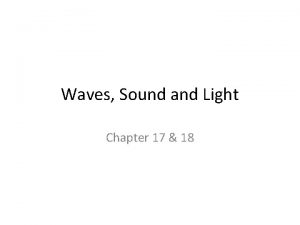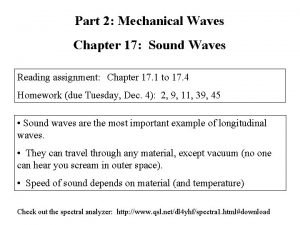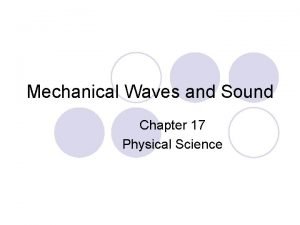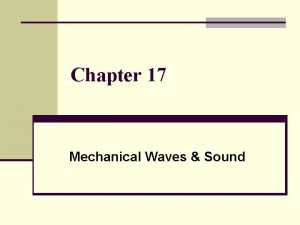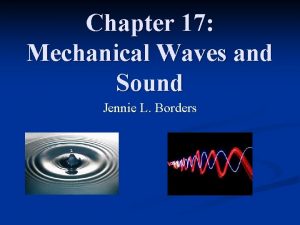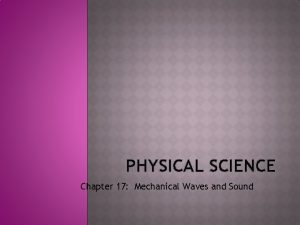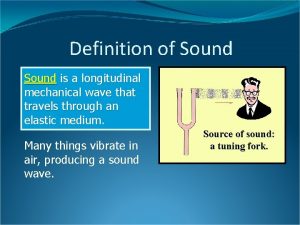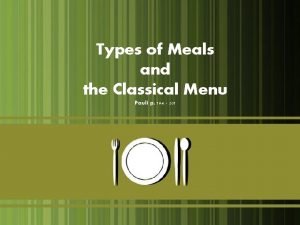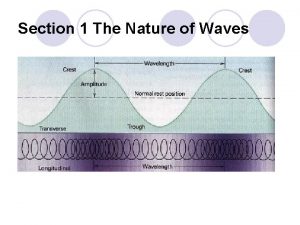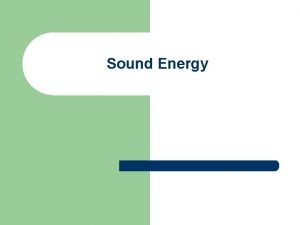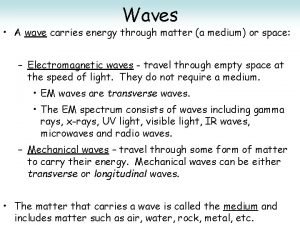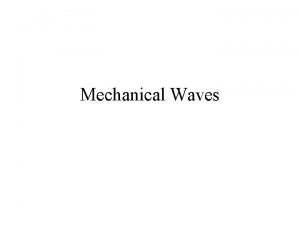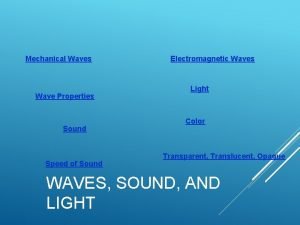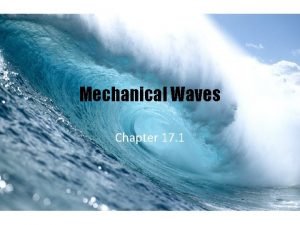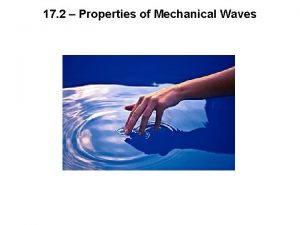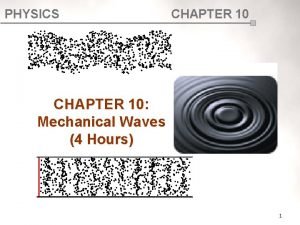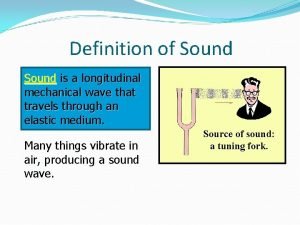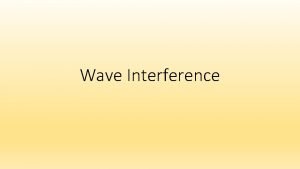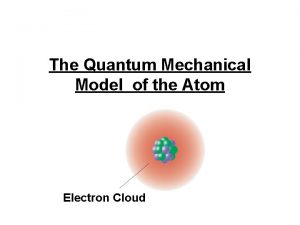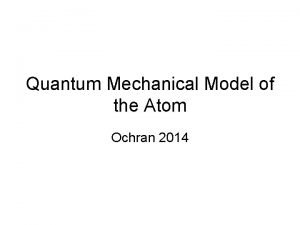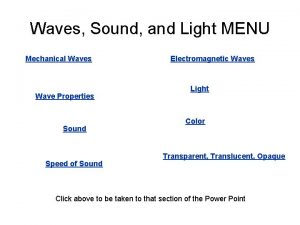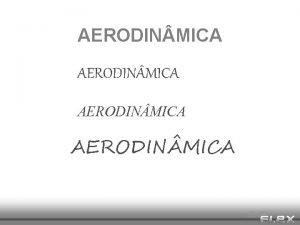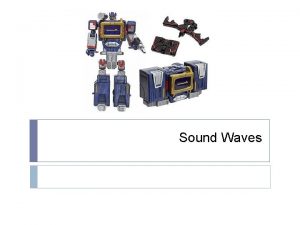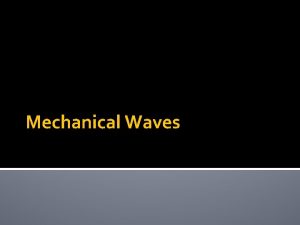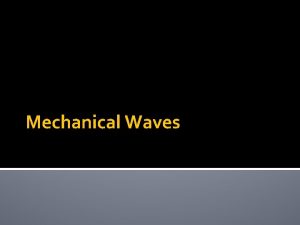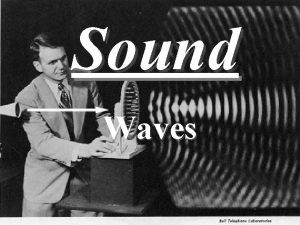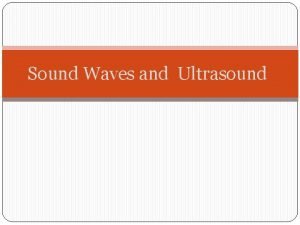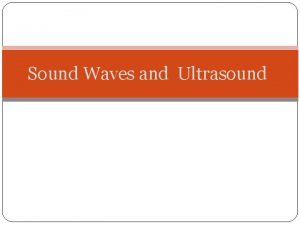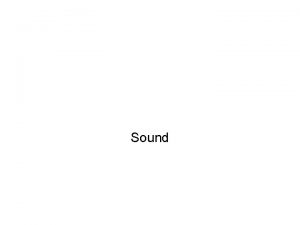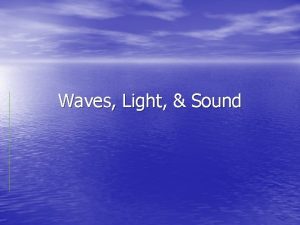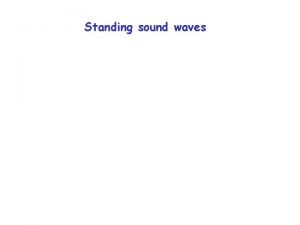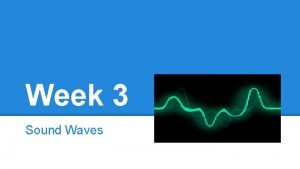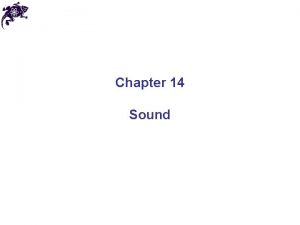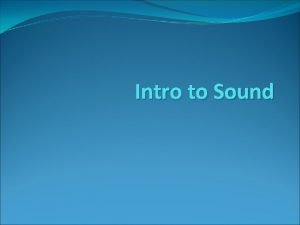Waves Sound and Light MENU Mechanical Waves Wave












































- Slides: 44

Waves, Sound, and Light MENU Mechanical Waves Wave Properties Sound Speed of Sound Electromagnetic Waves Light Color Transparent, Translucent, Opaque Click above to be taken to that section of the Power Point

Waves • 2 types of waves – Mechanical • Use matter to transfer energy through a medium – Electromagnetic • Do not need matter to transfer energy

Mechanical Waves • Waves that REQUIRE a medium for the energy to travel Examples: water waves, sound waves, energy moving through a slinky. What else?

Mechanical Waves • Use matter (Medium) to transfer energy. • The energy is transferred from particle to particle. • SOUND IS A MECHANICLE WAVE

There Are Two Basic Types of Mechanical Waves. Transverse Waves • The energy traveling through the wave causes the particles to move at a right angle to the direction of the energy. • This is what we usually draw when representing waves. • Ripples on a pond are an example of these.

The Second type of Mechanical Wave Compressional Waves • In this type the particles move in the same direction as the energy. • Sound is a Compressional Wave

Waves, Sound, and Light MENU Mechanical Waves Wave Properties Sound Speed of Sound Electromagnetic Waves Light Color Transparent, Translucent, Opaque Click above to be taken to that section of the Power Point

Wave Properties • Amplitude • Wavelength • Frequency • Human perception of amplitude – loudness • Human perception of frequency – pitch

Transverse Waves • Crest – very top of wave • Trough – very bottom of wave • Amplitude – Distance between resting position and crest/trough • Wavelength – Distance from the top of one crest to the next crest • Frequency – Number of wavelengths to pass by a given point in 1 second – 2. 5 in picture at right

Transverse Wave Examples

Transverse Waves (cont. ) • Frequency and Pitch – As frequency increases pitch gets higher – As frequency decreases pitch gets lower

Transverse Waves (cont. ) • Frequency and Wavelength – As frequency increases wavelength decreases – As frequency decreases wavelength increases

Compressional Waves • Medium travels slightly back and forth in the same direction as the energy is moving

Waves, Sound, and Light MENU Mechanical Waves Wave Properties Sound Speed of Sound Electromagnetic Waves Light Color Transparent, Translucent, Opaque Click above to be taken to that section of the Power Point

Electromagnetic Waves • Waves that DO NOT require a medium for the energy to travel • Examples: Light, radio waves, x-rays, gamma rays, etc. All waves on the electromagnetic spectrum

Electromagnetic Waves • These waves do not need matter to travel • Difference between the different waves is wavelength • EM spectrum illustrates the differences

Electromagnetic Waves (cont. ) • Radio – listen to your favorite station • Microwaves – call your friends • Infrared – night vision • Visible – you can see this presentation • Ultraviolet – tanning • X-ray – see broken bones • Gamma – kill cancerous cells

Waves, Sound, and Light MENU Mechanical Waves Wave Properties Sound Speed of Sound Electromagnetic Waves Light Color Transparent, Translucent, Opaque Click above to be taken to that section of the Power Point

Sound • Sound is a mechanical wave (requires a medium to travel) and a compressional wave (molecules colliding) • The medium sound travels through are molecules when they collide

Sound • Sound is produced when an object vibrates. • When an object vibrates it exerts a force on the surrounding air • Loudness of a sound is recorded in decibels • As a sound gets louder, the amplitude of the wave increases

Sound • The moving air mass carries the sound of the vibration to your ear. • The air is the MEDIA that it travels through. • Medium is what the wave travels through (ex. solid, liquid, gas) • NO MEDIUM NO SOUND!!!!

The Echo • An echo is when a sound wave hits a hard surface and bounces back, causing you to hear the sound a second time • Sonar uses echoes. It is a measure of how long it takes the echo to return to the source of the sound. Sonar can tell you how far an object is from you.

Waves, Sound, and Light MENU Mechanical Waves Wave Properties Sound Speed of Sound Electromagnetic Waves Light Color Transparent, Translucent, Opaque Click above to be taken to that section of the Power Point

Speed of Sound • The speed of sound is different depending on the medium it travels through

Speed of Sound • Sound travels at different speeds through different medium • The more dense a material the faster sound travels – 346 m/s in warm air – 5, 000 m/s in aluminum – 3, 240 m/s in gold

Speed of Sound • Sound travels better through high-density materials – The closer the molecules are together, the faster they can collide and transfer energy

Waves, Sound, and Light MENU Mechanical Waves Wave Properties Sound Speed of Sound Electromagnetic Waves Light Color Transparent, Translucent, Opaque Click above to be taken to that section of the Power Point

Light • Properties of Light

Light • EM wave that travels transversely (up and down motion) • Primary colors are red, green and blue • White light is made up of all colors • Black is the absence of color

Light (cont. ) • We see colors because objects reflect light • If you see a color, that specific color is being reflected while the rest are being absorbed (taken in) by the medium • White reflects all colors • Black absorbs all colors

What is Light? • It is a transverse wave that carries energy • It is a small part of the Electro. Magnetic Spectrum • Because it is part of the electromagnetic spectrum, it can travel through a vacuum (space)

How do you see things around you?

Without light, there is no sight!

Light REFLECTS off of objects.

How we see • When light strikes an object the light bounces off of the object and then into our eye. • For example, the light from the this projector hits the screen and then is reflected to your eye.

Waves, Sound, and Light MENU Mechanical Waves Wave Properties Sound Speed of Sound Electromagnetic Waves Light Color Transparent, Translucent, Opaque Click above to be taken to that section of the Power Point

Transparent, Translucent, Opaque

Opaque, Translucent, Transparent • Objects that do not let light pass through them are opaque. Ex. Walls, your desk, the science book • Objects that let light pass clearly through them are transparent. Ex. Windows, plastic wrap, eye glass lenses • Objects that let only some light pass through are translucent. Ex. waxed paper, frosted glass

Waves, Sound, and Light MENU Mechanical Waves Wave Properties Sound Speed of Sound Electromagnetic Waves Light Color Transparent, Translucent, Opaque Click above to be taken to that section of the Power Point

Color

COLORS • The suns light might appear white, but it is a mixture of colors. • White light is produced when you mix the colors of the rainbow together.

Light Color Mixing • The primary colors of light are RED, BLUE and GREEN

So why do we see different colors? • When white light hits an object some of it may be absorbed by the object while the rest of the light is reflected. The colors we see are the reflected colors.

Waves, Sound, and Light MENU Mechanical Waves Wave Properties Sound Speed of Sound Electromagnetic Waves Light Color Transparent, Translucent, Opaque Click above to be taken to that section of the Power Point
 Light is an electromagnetic wave true or false
Light is an electromagnetic wave true or false Mechanical wave and electromagnetic wave
Mechanical wave and electromagnetic wave Mechanical wave and electromagnetic wave
Mechanical wave and electromagnetic wave Mechanical waves
Mechanical waves Chapter 17 mechanical waves and sound worksheet answers
Chapter 17 mechanical waves and sound worksheet answers Chapter 17 mechanical waves and sound
Chapter 17 mechanical waves and sound Chapter 17 mechanical waves and sound
Chapter 17 mechanical waves and sound Chapter 17 mechanical waves and sound
Chapter 17 mechanical waves and sound Chapter 17 mechanical waves and sound
Chapter 17 mechanical waves and sound High and low frequency waves
High and low frequency waves Differences between mechanical and electromagnetic waves
Differences between mechanical and electromagnetic waves Mechanical waves and electromagnetic waves similarities
Mechanical waves and electromagnetic waves similarities Mechanical waves and electromagnetic waves similarities
Mechanical waves and electromagnetic waves similarities Sound is a longitudinal mechanical wave
Sound is a longitudinal mechanical wave Mechanical vs electromagnetic
Mechanical vs electromagnetic Is a seismic wave mechanical or electromagnetic
Is a seismic wave mechanical or electromagnetic What type of waves are sound waves? *
What type of waves are sound waves? * Whats a reflected sound wave
Whats a reflected sound wave Light light light chapter 23
Light light light chapter 23 Light light light chapter 22
Light light light chapter 22 Chapter 22
Chapter 22 Compare and contrast p waves and s waves using venn diagram
Compare and contrast p waves and s waves using venn diagram Difference between full wave and half wave rectifier
Difference between full wave and half wave rectifier Longitudinal vs transverse waves
Longitudinal vs transverse waves Full wave vs half wave rectifier
Full wave vs half wave rectifier P and s wave arrival time chart
P and s wave arrival time chart Wavelength formula triangle
Wavelength formula triangle Cyclical menu
Cyclical menu The higher the amplitude, the _______the sound.
The higher the amplitude, the _______the sound. Ability of two or more waves to combine and form a new wave
Ability of two or more waves to combine and form a new wave How is the sound /l/ made?
How is the sound /l/ made? Carbon dioxide temperature
Carbon dioxide temperature Surface waves and body waves
Surface waves and body waves Constructive
Constructive Actual mechanical advantage vs ideal mechanical advantage
Actual mechanical advantage vs ideal mechanical advantage Carries energy through matter
Carries energy through matter Parts of mechanical waves
Parts of mechanical waves How do mechanical waves move
How do mechanical waves move Which travels along a surface separating two media
Which travels along a surface separating two media Properties of mechanical wave
Properties of mechanical wave Mechanical wave formula
Mechanical wave formula Mechanical wave definition
Mechanical wave definition Reflected wave
Reflected wave Quantum mechanical model of atom
Quantum mechanical model of atom Quantum mechanical atom model
Quantum mechanical atom model



